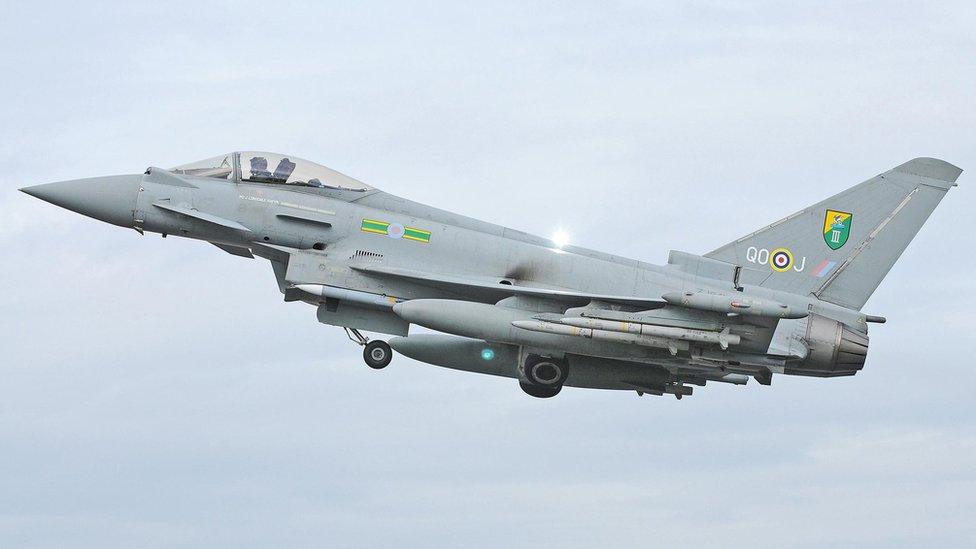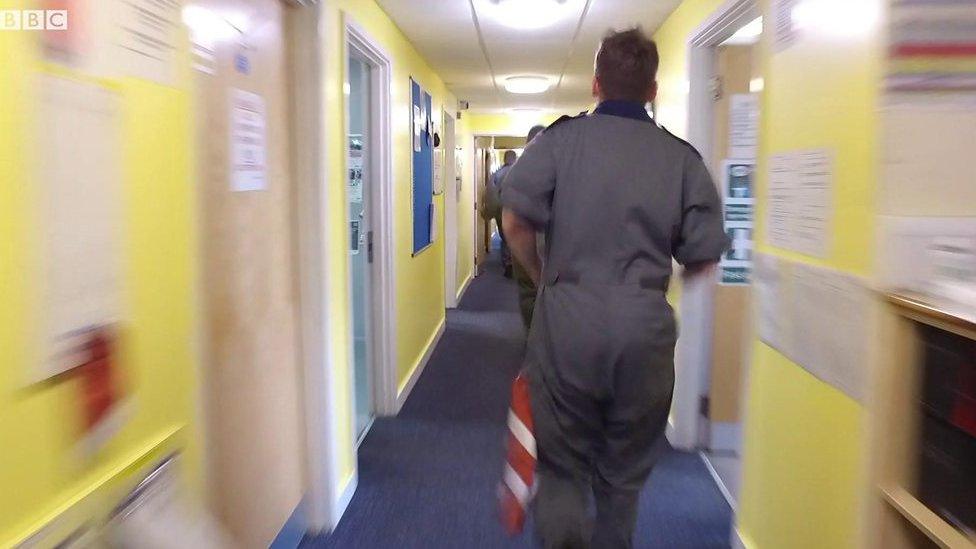Sonic boom as jets intercept aircraft with lost radio contact
- Published

Typhoons can travel at twice the speed of sound
Two Royal Air Force Typhoons caused sonic booms as they went to intercept an aircraft which had lost its radio contact over south-east England.
The fighters from RAF Coningsby in Lincolnshire were cleared to go supersonic because of the emergency.
The booms were heard in the early hours across London, Hertfordshire and Bedfordshire.
The aircraft first developed problems as it flew across Germany on its way to the US, said one of its pilots.
The pilot praised the speed of the RAF response, but said he was shocked when he first saw the fighters.
Steven Giordano told the BBC: "It took us about 10 minutes to realize that the radio wasn't working and then about 10 minutes to resolve that problem.
'Heart attack'
"Amazing how fast the RAF reacted. I applaud them for that."
He said the crew was busy checking frequencies when the radio came back online and had not noticed the RAF fighters.
"I looked left and about had a heart attack when I saw one - so close - strobes on and with blueish 'glow strips' along the side of his fuselage.
"We flashed our landing lights to acknowledge and established radio contact on 'guard'... with the fighters.
"We were already talking to London control at that point.
"They remained with us for about five minutes."
Speed of sound
He said the empty aircraft eventually landed safely in the US.
The sonic booms woke people at about 04:20 GMT - with houses shaking and reports of police sirens sounding immediately after.
The Metropolitan Police subsequently confirmed the bang was the result of the RAF aircraft, external being cleared to go faster than the speed of sound.
RAF jets are only given permission to go supersonic in emergencies, usually when they are required to intercept another aircraft.
Allow X content?
This article contains content provided by X. We ask for your permission before anything is loaded, as they may be using cookies and other technologies. You may want to read X’s cookie policy, external and privacy policy, external before accepting. To view this content choose ‘accept and continue’.
An RAF spokeswoman said: "Typhoon aircraft from RAF Coningsby were scrambled this morning, as part of the UK's Quick Reaction Alert (QRA) procedures, after an aircraft lost communications in UK airspace.
"The aircraft was intercepted and its communications were subsequently re-established."
Janet, from Hertfordshire, told the BBC she heard a "huge thud" and felt her house shake at 04:17 GMT.
She wondered whether her boiler had blown up or a tree had fallen on the house, she said.
"I got up, looked around and out of the window, things looked fine," she said.
"I went downstairs, went from room to room looking for cracks in the walls and ceilings."
Kiran Topan tweeted this video:
Allow X content?
This article contains content provided by X. We ask for your permission before anything is loaded, as they may be using cookies and other technologies. You may want to read X’s cookie policy, external and privacy policy, external before accepting. To view this content choose ‘accept and continue’.


What causes a sonic boom?
Earlier this year, the BBC got exclusive access to the Quick Reaction Alert Typhoon team at RAF Coningsby
When an aircraft approaches the speed of sound (768mph or 1,236km per hour), the air in front of the nose of the plane builds up a pressure front because it has "nowhere to escape", said Dr Jim Wild of Lancaster University.
A sonic boom happens when that air "escapes", creating a ripple effect which can be heard on the ground as a loud thunderclap.
It can be heard over such a large area because it moves with the plane, rather like the wake on the bow of a ship spreading out behind the vessel.

- Published1 December 2019

- Published25 June 2019
